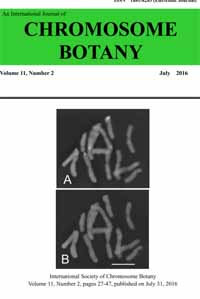Volume 11, Issue 2
Chromosome Botany Vol.11, No.2
Displaying 1-10 of 10 articles from this issue
- |<
- <
- 1
- >
- >|
Information of the Journal
-
2016Volume 11Issue 2 Pages A21
Published: 2016
Released on J-STAGE: July 31, 2016
Download PDF (50K) -
2016Volume 11Issue 2 Pages A22
Published: 2016
Released on J-STAGE: July 31, 2016
Download PDF (94K) -
2016Volume 11Issue 2 Pages A23
Published: 2016
Released on J-STAGE: July 31, 2016
Download PDF (82K) -
2016Volume 11Issue 2 Pages A24
Published: 2016
Released on J-STAGE: July 31, 2016
Download PDF (89K)
Regular Article
-
2016Volume 11Issue 2 Pages 27-30
Published: July 31, 2016
Released on J-STAGE: July 31, 2016
Download PDF (423K) -
2016Volume 11Issue 2 Pages 31-36
Published: July 31, 2016
Released on J-STAGE: July 31, 2016
Download PDF (581K) -
2016Volume 11Issue 2 Pages 37-43
Published: July 31, 2016
Released on J-STAGE: July 31, 2016
Download PDF (510K) -
2016Volume 11Issue 2 Pages 44-47
Published: July 31, 2016
Released on J-STAGE: July 31, 2016
Download PDF (592K)
Information of the Journal II
-
2016Volume 11Issue 2 Pages B21
Published: 2016
Released on J-STAGE: July 31, 2016
Download PDF (101K) -
2016Volume 11Issue 2 Pages B22
Published: 2016
Released on J-STAGE: July 31, 2016
Download PDF (95K)
- |<
- <
- 1
- >
- >|
